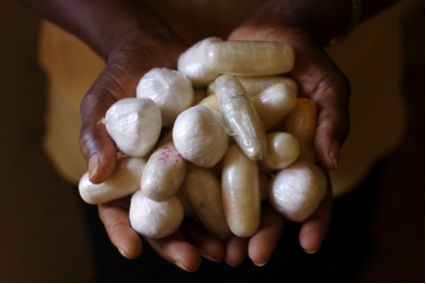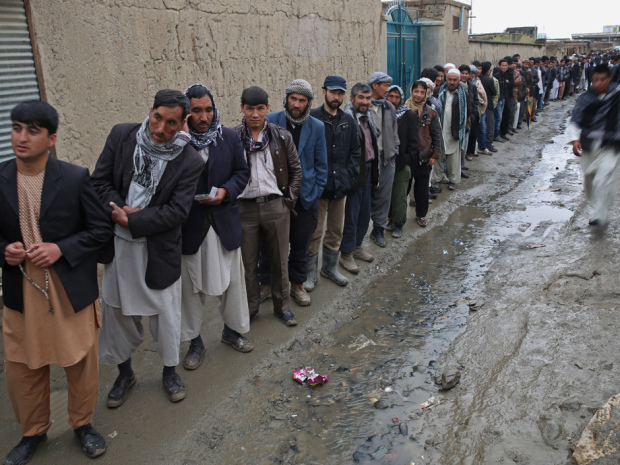The U’wa people of Colombia have been struggling, through peaceful protests, to keep their territory free of multinational companies. This has cost the Colombian state over $136 million in oil revenues. When addressing the situation, Bogotá needs to find a way to consolidate the U’wa’s interests while considering options to compensate for Colombia’s economic losses.
Unfortunately, the continuation of the armed forces’ attacks on oil pipelines only further complicates any possible solution. In the midst of these attacks, the government is pursuing peace talks with the Revolutionary Armed Forces of Colombia (FARC) and the Popular Liberation Army (ELN). The only sustainable solution is one in which each of the involved parties has more to gain from peace and cooperation than from continuing their fight.
Background
The United Nations reports that the U’wa is one of over 40 Colombian indigenous groups in danger of extinction due mainly to mining and armed conflict. Multinational Monitor writes how the various projects result in “ecocide, genocide and ethnocide” for their people as they deal with contamination of land and water, demolished homes, and internal displacement. The Colombian government has yet to abide by the constitutional indigenous laws, while the U’wa do not want oil to be drilled because it is considered to be the blood of Mother Earth.
The U’wa have had some success in their campaign: their 2002 strategy to implement an international solidarity campaign caused the California-based Occidental Petroleum (Oxy) to pull its project from Colombia. The Goldman Prize website explains how an extensive media campaign — including a front page on Wall Street Journal and targeting one of Oxy’s top shareholders, Fidelity Investments — influenced Fidelity to sell $400 million in Oxy shares. Despite this feat, the eventual outcome was less impressive: Ecopetrol quickly occupied the space Oxy had left behind. Since then, efforts by the Colombian government to protect the U’wa have been lackluster.
The external factor of armed forces further complicates the situation. In 1999, the FARC, the largest guerrilla group in Colombia, kidnapped and killed three American environmentalist coalition members, who were organizing with the U’wa. The FARC showed no tolerance for people assisting the U’wa. On the other side of the equation, the ELN, Colombia’s second-largest rebel group, declared war on the multinationals and oil companies for “plundering” the country’s natural resources. After this ELN statement in November 2013, the ELN attacked the Caño Limón-Coveñas Pipeline twice. On June 27, 2014, the U’wa wrote an official letter to President Santos about the occurrence on March 25, 2014 when the ELN attacked a section in the municipality of Samore within the collective territory of the U’wa. Shortly thereafter, on May 1, the ELN attacked again in the hamlet of La Blanquita.
In the letter, the U’wa and 27 groups demanded from President Santos, among other things, recognition of their resguardo (indigenous reserve), according to their colonial land titles and the cancellation of the Magallanes gas exploration project and the rest of the mining/energy concessions in their ancestral territories, including the dismantling of the infrastructure located in the Gibraltar well.
The struggle for a long-term solution
In order for a solution to be reached, all sides will need to accommodate each other’s interests. Economic damages have been real, with significant impact on the country as a whole. The U’wa’s blockage of the Caño Limón-Coveñas oil pipeline resulted in the loss of over $136 million in oil revenues to date. This pipeline carries nearly 80,000 barrels of oil per day to the Caribbean coast. In addition to pipelines, rebels attack trailer trucks, which transport the crude. Because of the paralysis of the Caño Limón-Coveñas oil pipeline, it was the main reason why the Colombian economy failed to meet its target of producing a million barrels a day in March and April. President Santos started holding peace talks with FARC rebels in late 2012 and the ELN began to seek an official peace process with the administration of President Santos. Yet, in 2013, a Reuters report reveals how Colombian leftist rebels continue to attacked oil pipelines for at least 259 times, even if oil companies managed to fix the damage within a few days and avoided major disruptions.
There is a serious risk of indigenous groups disappearing because of mining operations, but the Colombian government’s options for development decreases if they choose to support the U’wa. It would be irresponsible to simply forego such significant sources of state revenue. After decades of internal conflict for identity, territory, and autonomy between guerillas, militias, paramilitary, etc., the country is in desperate need of stability, both political and economical. The Colombian population, even if sympathetic to the U’wa plight, has shown little willingness to forego sources of revenue as important as the ones at stake. Politicians, companies and global actors even less so.
Colombia has lived through troubling times, but it is changing positively and overcoming past obstacles. After the breakdown of the Medellín Cartel and the death of Pablo Escobar, Medellín, a once violence-riddent city, has come a long way to be named “Innovative City of the Year” by Citi and the Marketing Services Department of the Wall Street Journal in 2012. With breakthroughs such as this in Colombia, President Santos’ strategy to discuss peace with leftist guerrillas has taken Colombia to a markedly improved situation. As a result, the ushering of Colombia’s new image might force Colombian officials to prioritize the strengthening of her economy. This would likely go against U’was interests, with the current national recovery being too fragile to risk for lofty principles.
Global forces do not seem to support the U’wa either. The United States, a fundamental player in Colombian politics, is looking to cash in on the improved situation within its long-term ally. Washington seeks to diversify its energy supply away from instable Middle Eastern sources, and is leaning heavily on Bogotá to further develop its natural resource potential. Moreover, multinationals are looking past the Oxy experience and focus on economic partnerships with Colombian actors. Even if there do exist active advocacy initiatives on behalf of indigenous groups, and the UN has come out in support on various occasions, the winds are clearly not blowing in U’wa’s favor.
Local vs. national vs. global
The case of the U’wa people is one that exemplifies the difficulty of negotiating the complexity of clashing interests between types of actors. Local actors clinging on to their way of life in the face of outside threats; national actors who seek to spread natural wealth among the entire population; and global actors looking to cash in on new found stability and prosperity in an important strategic region. Any type of sustainable solution will need to balance these three distinct- but interrelated- dynamics. A start would be to build on the stability domestic peace with internal groups such as the FARC and ELN brings. All three- indigenous, state and global players- share a common interest in long-term stability that accompanies peace. Within that scenario, recognition for the rights of indigenous people, acceptance of economic sharing with other parts of the country and a tolerance for outside actors could lead to the right mix for mutual recognition, if perhaps not mutual enthusiasm. Finding the right compromise will require strong political leadership and possibly outside mediation. The first step, however, is to identify a common ground. Strengthening the current roots of peace and potential prosperity seems as good a start as any.

 On Friday 19 September, France launched its first air strikes on the Islamic State (IS) in Iraq. The latest advances of IS have led many Western governments to change policy with respect to the Middle-East. Some governments have delivered weapons to the Peshmergas, others announced their willingness to back Syrian rebels, while aerial strikes continue in Iraq and might start in Syria as well. This lack of direction, or “non – strategy”, of the international community in the Middle East is likely to have deeply harmful regional as well as international consequences in the long-run.
On Friday 19 September, France launched its first air strikes on the Islamic State (IS) in Iraq. The latest advances of IS have led many Western governments to change policy with respect to the Middle-East. Some governments have delivered weapons to the Peshmergas, others announced their willingness to back Syrian rebels, while aerial strikes continue in Iraq and might start in Syria as well. This lack of direction, or “non – strategy”, of the international community in the Middle East is likely to have deeply harmful regional as well as international consequences in the long-run.
